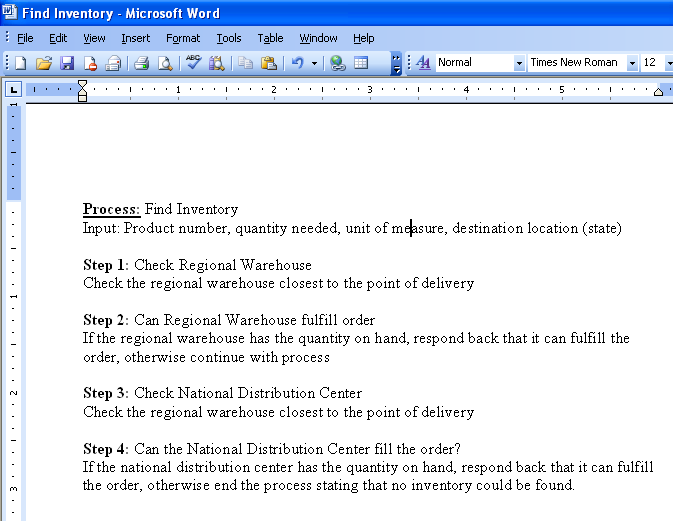Although this is a very incomplete example, consider the following. A Process Analyst sits in front of their favorite tool (Microsoft Word) and writes down the name of the process, a small description and a handful of steps:

Now, the analyst adds a schema (or two) to the Word 2003 document by pulling up the "Tools: Templates and Add-Ins" window. In the example I'm using, they are adding in the BPEL schema but it might likely be a higher-level (more abstract) grammar that they choose.

Now, the analyst goes back to the document and "paints structure" into the content. This assumes that the analyst is given some extra training in such a process (think UML like training, "Process Case").

After painting the structure around the Process Case, the user is able 'hide xml' so that it looks like a normal requirements document. The analyst then takes the 'requirements' and sends it off to development. But, since it was 'painted' with a well known schema, the developer merely uploads the requirements document directly into their orchestration tool which stubs out the entire process for them. Now, of course there will be mismatches in syntax and scope, but the developer will make the changes and forward back the structured document for approval to the analyst.
At the same time, the developer will be creating a vocabulary of services. These will be marked up in WSDL (service:operation). Imagine terms like "checkInventory", "fillOrder", etc. These terms will then be made available to the analyst to drop into their future requirements documentation. By repeating this process, the links between analysis and design will continue to grow in strength.
This is still an early concept but our early tests indicate that we can significantly reduce development / integration costs by using the aforementioned closed-loop mechanism.
No comments:
Post a Comment